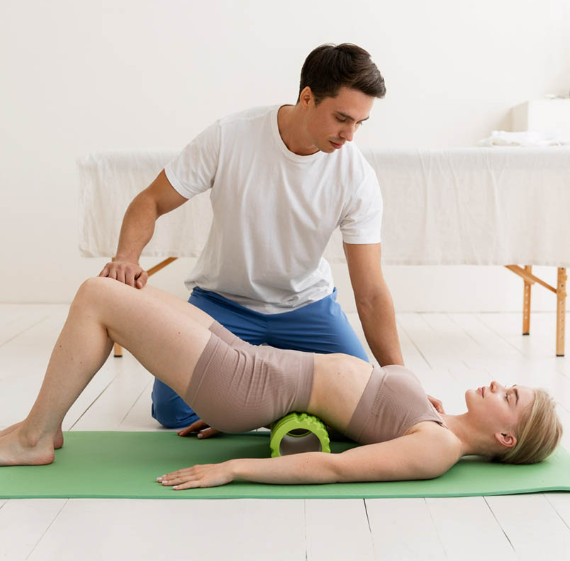Constipation is a common condition that affects millions of people worldwide, causing discomfort and impacting daily life. For many, the search for relief often leads to various treatments. One promising option gaining recognition is pelvic floor therapy, which addresses the underlying issues contributing to constipation. This article will explore the role of pelvic floor therapy, its benefits, and effective exercises to help manage and alleviate constipation.
What is Pelvic Floor Therapy?
Pelvic floor therapy is a form of physical therapy that focuses on the muscles, ligaments, and connective tissues that support the pelvic organs such as the bladder, rectum, and intestines. These muscles are crucial for proper bowel movements, and any dysfunction in this area can lead to constipation. Through specific exercises, manual therapy, and biofeedback, pelvic floor therapy aims to restore the optimal function of these muscles, improving their strength and coordination.
How Pelvic Floor Dysfunction Causes Constipation
Pelvic floor dysfunction occurs when the muscles of the pelvic region become too tight, weak, or uncoordinated. This dysfunction can make it difficult to relax and contract the muscles required for a normal bowel movement. In some cases, people may excessively strain, which can worsen constipation and even lead to other issues like hemorrhoids or rectal prolapse.
Recognizing the Symptoms of Constipation
Knowing when you might benefit from pelvic floor therapy is key to finding relief. Common signs of constipation include:
- Straining: The need to exert extra effort during bowel movements, which can lead to muscle fatigue and worsening symptoms.
- Hard Stools: Dry, hard stools can cause pain and may result in hemorrhoids or small tears.
- Infrequent Bowel Movements: Going fewer than three times per week can signal sluggish bowel function and make stool harder to pass.
- Incomplete Evacuation: A feeling of not fully emptying your bowels, which can be caused by pelvic muscle dysfunction.
- Abdominal Discomfort: Bloating, cramping, or pain due to trapped gas or stool, often accompanying irregular bowel movements.
- Rectal Blockage: A sensation of a physical blockage, which can be the result of tight pelvic muscles or stool buildup.
How Pelvic Floor Therapy Helps Relieve Constipation
Pelvic floor therapy works by targeting the root causes of constipation. By improving pelvic muscle coordination and function, this therapy promotes smoother bowel movements and reduces the effort needed to pass stool.
Key Benefits of Pelvic Floor Therapy for Constipation
Pelvic floor therapy offers several advantages, particularly in enhancing muscle function and improving bowel health:
- Improved Muscle Coordination: Therapy helps pelvic floor muscles relax and contract properly, easing bowel movements.
- Reduced Straining: Patients learn techniques that minimize the need for excessive effort during defecation.
- Relief from Rectal Blockage: Targeted exercises can help release muscle tension and make stool passage easier.
- Better Bowel Function: Many people experience more frequent bowel movements and improved stool consistency with pelvic floor therapy.
Studies have shown that pelvic floor physical therapy can significantly improve constipation, with up to 90% of patients reporting better defecation frequency and reduced stool size.
Pelvic Floor Exercises for Constipation Relief
Incorporating pelvic floor exercises into your routine can be an effective way to manage constipation. These exercises focus on strengthening the muscles involved in bowel movements and improving their coordination.
- Kegel Exercises: Kegels are performed by contracting and relaxing the pelvic muscles to improve strength and control. To perform Kegels:
- Sit or lie in a comfortable position.
- Squeeze the muscles used to stop urination and hold for 3-5 seconds.
- Relax and hold for an equal amount of time.
- Repeat 10-15 times, 2-3 times a day.
- Squatting Exercises: Squatting improves rectal alignment and allows for easier stool passage. To perform a squat:
- Stand with feet shoulder-width apart.
- Lower into a squat, keeping your back straight and thighs parallel to the floor.
- Hold the squat for 10 seconds, then return to standing.
- Perform 10-12 repetitions daily.
- Pelvic Tilts: This exercise helps with pelvic mobility and relaxes the lower back and abdominal muscles. To perform pelvic tilts:
- Lie on your back with knees bent and feet flat on the floor.
- Gently tilt your pelvis upward, flattening your lower back against the floor.
- Hold for 5 seconds and return to the starting position.
- Repeat 10-15 times.
Additional Tips for Managing Constipation
While pelvic floor therapy is highly effective, combining it with lifestyle changes can provide further relief. Here are some tips:
- Stay Hydrated: Drink 8-10 glasses of water daily to help soften stool and make bowel movements easier.
- Increase Fiber Intake: A diet rich in fiber from fruits, vegetables, and whole grains promotes regularity. Gradually increase fiber to avoid discomfort like bloating or gas.
- Exercise Regularly: Physical activity stimulates bowel movements and supports digestive health. Aim for at least 30 minutes of moderate exercise most days of the week.
When to Seek Professional Help
If constipation persists despite lifestyle adjustments, it may be time to consult a pelvic floor therapist. Signs that professional help is needed include:
- Ongoing difficulty with bowel movements.
- Pain or discomfort in the pelvic region.
- Symptoms of pelvic floor dysfunction, such as urinary incontinence.
Pelvic floor therapists offer personalized treatment plans to address the specific causes of constipation and pelvic floor dysfunction. They can guide you through exercises and therapy to improve bowel health effectively.
Conclusion
Constipation can be uncomfortable and frustrating, but pelvic floor therapy offers a natural and effective solution. By targeting the root causes—muscle dysfunction and coordination—pelvic floor therapy helps improve bowel movements and quality of life. When combined with healthy lifestyle habits, such as proper hydration, a fiber-rich diet, and regular exercise, this therapy can provide long-lasting relief from constipation. If you’re struggling with constipation, consider consulting a pelvic floor therapist to explore the best treatment options.

Leave a Comment